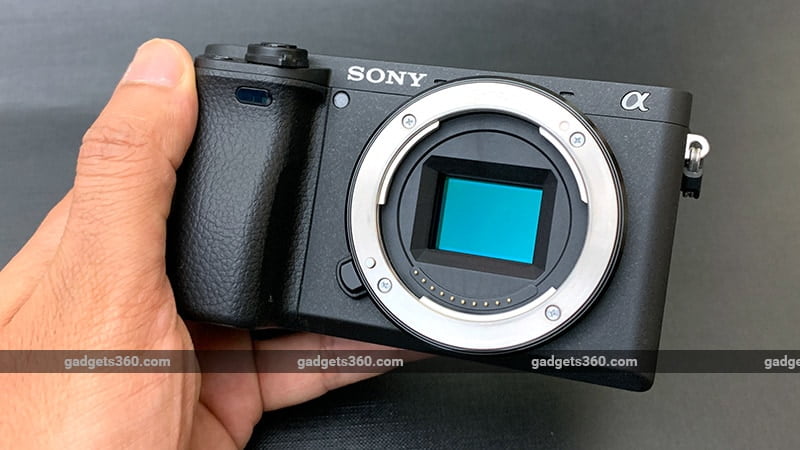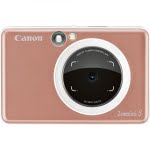
The premium APS-C and full-frame mirrorless camera worlds are colliding. Canon just recently launched its budget EOS RP full-frame mirrorless camera for about a Rs. 1,10,000, which puts it in roughly the same segment as other notable cropped sensor mirrorless cameras such as the Sony A6500 and the Fujifilm X-T3. With full-frame cameras at the price of cropped sensor cameras, are the days of the premium APS-C mirrorless cameras numbered?
We highly doubt it. In the mirrorless segment, APS-Ccameras still have the lion’s share, when compared to full-frame or medium-format cameras. Sony’s latest A6400 cropped sensor mirrorless camera is also proof that this segment is alive and kicking.
The A6400 joins Sony’s popular APS-C lineup, and as the name suggests, it sits between the A6300 and the A6500. The new A6400 has many features in common with the other two models, but also introduces many firsts, making it an interesting choice for around Rs. 75,990. Read our review to see if it’s worth picking up.
Contents
Sony A6400 design and ergonomics
The design of the body is pretty much unchanged when you compare it to the models that sit above and below it, except for a couple of little tweaks. The Sony A6400 has the exact same height and width as the A6500 but the depth is slightly less due to the slightly rounded-off hand grip. This shouldn’t be an issue if you have small hands, but after a couple of hours of shooting, we wished there was a bit more body to hold on to. This camera doesn’t have weather sealing but it is about 50g lighter than the A6500.
 The Sony A6400 is a compact camera but fitting a large lens does make it a bit heavy
The Sony A6400 is a compact camera but fitting a large lens does make it a bit heavy
The layout of the buttons and ports should be familiar too, if you’ve used the older A6300. On the left side, there’s a slide-out flap that covers a Micro-USB port, Micro-HDMI port, and a 3.5mm microphone input. The battery and single SD card slot (up to UHS-I speeds) is at the bottom, below the hand grip. On the top, we have a hot shoe mount, pop-up Xenon flash, mode dial, and command dial. The shutter button is placed up front towards the edge of the hand grip.
The back of the Sony A6400 has pre-assigned function buttons, but most of them can be remapped to perform other functions. There’s a command dial that also doubles as a four-way navigation pad. The electronic viewfinder or EVF has a resolution of 2.3 million dots, which is decent, and you can choose to run it at either 60fps or 120fps. The latter offers smoother motion but at a lower resolution.
One of the new additions to the A6400 is the 3-inch LCD screen. It’s still a touch panel with a 921K dot resolution but it can now flip up 180 degrees, rather than just being able to tilt up or down like on the previous models. This makes taking selfies a lot simpler. A small portion of the bottom of the display is blocked when it is flipped up, but this isn’t much of a problem.
 The button layout is very similar to the previous Sony A6300 model
The button layout is very similar to the previous Sony A6300 model
A bigger issue arises when you try and fit an external microphone onto the hot shoe, which completely blocks the display. This is not ideal if you’re looking to vlog professionally. As pointed out by many on the Internet, one solution would be to use a Smallrig cage and mount the microphone to the side of the camera.
In India, Sony is selling the A6400 in three bundles. There’s one with just the body for the Rs. 75,990 price we stated earlier; one with a 16-50mm lens for Rs. 10,000 more; and the third with an 18-135mm zoom lens for Rs. 1,09,990, which is the kit we have. This lens has built-in stabilisation, an aperture range of f/3.5 to f/5.6, a switch to toggle between manual and auto focus, a zoom ring, and a focus ring. This particular lens does add a fair bit of heft to the camera too. The other contents of the box are a shoulder strap, power adapter, Micro-USB cable, and the NP-FW50 battery.
Sony A6400 features and specifications
The Sony A6400 uses a 24.2-megapixel APS-C CMOS sensor with the same 425 PDAF points as the A6300 and A6500. Unlike those two models, the A6400 also has the same number of contrast detection autofocus points, which is how it’s able to achieve a claimed autofocus speed of just 0.02 seconds.
The focus points cover around 84 percent of the sensor area, which makes it easy to track your subject. It’s hard to actually measure this claimed AF speed, but we’ll take Sony’s word for it here as it is uncannily quick at locking focus and tracking moving subjects — more on this in the next section.
The camera has a native ISO range of 100-32,000, which can be expanded to ISO 1,02,400. Burst shooting tops out at 11fps in ‘Hi+’ mode, but without a live view of your subject. If you want the latter, then you need to drop the burst speed down to ‘Hi’ mode which still gives you a decent 8fps.
With the latter, you can track you subject’s position in real-time, which is handy when shooting anything in motion. You can also take bursts silently at up to 8fps, and the camera is capable of shooting 14-bit RAW files.
 There’s a good selection of ports but we would have liked a USB Type-C instead of Micro-USB
There’s a good selection of ports but we would have liked a USB Type-C instead of Micro-USB
Another new feature is an AI-based algorithm for eye and subject tracking. From the moment you half-press the shutter button, the A6400 will detect and track a subject’s face and eyes, if visible. You can manually choose which eye to track or leave it on auto.
Tracking performance is mighty impressive, and the A6400 locks on to either eye even if your subject isn’t looking directly at the camera. A future update is also said to enable Eye AF for animals, which is good news for wildlife photographers.
The A6400 can shoot 4K video without any pixel binning. This means video is captured at a higher resolution and then oversampled to 4K, which, in theory, should capture more detail. The camera can shoot at this resolution at up to 30fps (if you’ve chosen NTSC) or at 1080p resolution at up to 120fps. You can also shoot using professional-grade profiles such as Cine, S-Log, and HLG, for HDR workflows. There’s a dedicated S&Q (Slow and Quick) mode on the mode dial, which lets you capture ready-to-go slow motion videos. Selectable frame rates range from 1fps to 120fps.
The menu system is easy to navigate through, with all the settings grouped under colour-coded tabs. You still can’t use touch input here, but the navigation pad and wheel make it easy to jump to wherever you need to go. You can sync the camera with an iOS or Android device using Sony’s Play Memories app to transfer files, but the experience isn’t as seamless as Nikon’s or Canon’s implementations.
The Sony A6400 also has Bluetooth but you can’t automatically transfer photos to your phone as you take them. Also, whenever you want to transfer images, the camera connects through Wi-Fi. It does have NFC, which makes the pairing process with compatible Android phones quicker.
Sony A6400 performance and battery life
In our first test, we checked the camera’s ISO performance to get an idea of how well it will do in low-light. The A6400 maintained sharp details and good colours with no noticeable noise till about ISO 1,600. At ISO 6,400, we began to see slight degradation in finer details in the shaved areas of the pencil but there was still no cause for concern. Jumping a full stop higher to ISO 12,800, we noticed slight grain in the colours but still not a lot of chroma noise.
 Sony A6400 ISO test
Sony A6400 ISO test
At the maximum native ISO of 32,000, the edges around the pencils were a little blurry and details suffered, but there still wasn’t too much chroma noise, which is an improvement over the A6300. We also tested the extended ISO settings, and as you can see, photos were completely unusable at ISO 1,02,400.
If you’ve used Sony’s APS-C mirrorless cameras in the past, the A6400 should be very familiar. With an 18-135mm lens, the camera doesn’t feel too heavy even after a full day of shooting. The LCD is sharp and helps in framing shots. It does wash out under direct sunlight, but this can be easily fixed by switching the brightness to ‘Sunny Weather’ mode. The EVF does help here, but we had to bump its brightness up too, under sunlight.
Eye AF works very well, even in dim lighting conditions. The A6400 simply locks onto a subject’s face and refuses to let go. Even with our subjects moving about erratically, the camera was able to keep up and continuously track their faces and eyes. Subject tracking is another feather in the camera’s hat. You can simply tap on the object you want to track when shooting video and the camera simply sticks to it even as the frame moves around. You can adjust the responsiveness of the tracking and autofocus in the settings.
 Sony A6400 camera sample: ISO 1,000, f/5.6, 1/25, 135mm (tap to see full-sized image)
Sony A6400 camera sample: ISO 1,000, f/5.6, 1/25, 135mm (tap to see full-sized image)
 Sony A6400 camera sample: ISO 500, f/5.6, 1/125, 67mm (tap to see full-sized image)
Sony A6400 camera sample: ISO 500, f/5.6, 1/125, 67mm (tap to see full-sized image)
 Sony A6400 camera sample: ISO 100, f/5.6, 1/125, 18mm (tap to see full-sized image)
Sony A6400 camera sample: ISO 100, f/5.6, 1/125, 18mm (tap to see full-sized image)
 Sony A6400 camera sample: ISO 1,600, f/5.6, 1/250, 135mm (tap to see full-sized image)
Sony A6400 camera sample: ISO 1,600, f/5.6, 1/250, 135mm (tap to see full-sized image)
The camera also excels at burst shooting with continuous tracking. We had our subject sprint towards us in a zig-zag fashion, and the A6400 easily maintained focus in pretty much every single shot, which was impressive. There’s a sizeable buffer too. On average, we managed to shoot around 111 frames in shutter priority and Hi+ mode, before it slowed down.
As quick as the autofocus is, the A6400 did hunt for focus at times in low light and when using the full extent of the 18-135mm zoom lens, probably due to the narrower f/5.6 aperture at the telephoto end. When using the EVF, you can still use the LCD as a touchpad to move the focus point around. However, we encountered a small bug where this would randomly stop working at times. To fix this, we had to switch back to the LCD display, move the point around, and then switch back to the EVF, after which the touchpad would resume working.
The quality of 4K and 1080p video was very good when recorded under good light. Colours were vivid without looking artificial and the camera’s focus tracking is a real gem. When vlogging, the A6400 locks onto your face and always keeps it in focus. Videos were slightly shaky since there’s no electronic or in-body stabilisation. Dynamic range was quite impressive too, and was especially evident when shooting against direct sunlight.
In low light, the A6400 did a commendable job of keeping noise in check. 4K footage started getting noisy after ISO 6,400, but even at this point the noise was manageable. There’s no issue with the rolling shutter when shooting 1080p but at 4K, it’s clearly visible whenever you move the camera about. Once again, this isn’t very evident when shooting a video of yourself, since your face would normally take up most of the frame but otherwise, when you pan the camera around, you’ll notice a ‘jelly’ effect in objects. The A6400 does get warm after a few minutes of shooting video, but we didn’t have any overheating issues.
 Sony A6400 camera sample: ISO 6,400, f/5, 1/25, 41mm (tap to see full-sized image)
Sony A6400 camera sample: ISO 6,400, f/5, 1/25, 41mm (tap to see full-sized image)
 Sony A6400 camera sample: ISO 6,400, f/5.6, 1/13, 135mm (tap to see full-sized image)
Sony A6400 camera sample: ISO 6,400, f/5.6, 1/13, 135mm (tap to see full-sized image)
 Sony A6400 camera sample: ISO 1,600, f/3.5, 1/30, 18mm (tap to see full-sized image)
Sony A6400 camera sample: ISO 1,600, f/3.5, 1/30, 18mm (tap to see full-sized image)
In daylight landscapes, the Sony A6400 captured very good detail. Dynamic range was once again impressive, and even distant objects had good sharpness and definition around the edges. We didn’t notice any chromatic aberrations, although this lens did add very slight vignetting at the corners of some of the samples we took. Macros were equally detailed, with good edge sharpness and colours. Despite having a narrow aperture, the 18-135mm lens can produce pleasant bokeh when shooting portraits.
In low light, the camera’s in-built noise reduction system worked well at suppressing noise at higher ISO levels, while still maintaining sufficient detail. The lens stabilisation works well in compensating for hand shakes, even when shooting with shutter speeds as low as 1/5 of a second.
The A6400 is rated to deliver around 410 shots per charge under ideal conditions and when using the LCD display. This is an improvement over the A6500’s battery life, which is rated at 350 shots per charge. In our experience, we often managed to go a little beyond the rated battery life when shooting a mix of stills and video. With the camera set to Airplane mode and the LCD not showing a live view all the time, we took around 420 shots and still had roughly 40 percent remaining. The A6400 can be charged by a powerbank, and you can even use one to power to the camera and continue your shoot.
Verdict
There’s no denying that the A6400 is yet another solid addition to Sony’s APS-C lineup. It features a class-leading autofocus system, good battery life, and a flip-up touchscreen for selfies. It shoots high-quality stills as well as videos. In-body stabilisation would have completed the package nicely, but that’s where the A6500 comes in. One side-effect of having a screen that flips up instead of sideways is that hot shoe accessories will get in the way. When shooting at 4K, there’s noticeable rolling shutter if you or your subject moves across the the frame quickly, which can be annoying.
This new model has some notable improvements over the A6300, which was a very good camera to begin with. However, we don’t think these improvements are significant enough to trade in your A6300 for the A6400.
If you absolutely need in-body stabilisation, there’s always the A6500. That model has been in the market since 2016 and you can currently find it heavily discounted online. In fact, at the time of writing this review, the A6500 with the 18-135mm kit lens is going for just Rs. 4,000 more than the A6400 equivalent. With the A6500, you get hardware-level stabilisation but at the same time, you also lose out on some of the new features of the A6400 such as the improved AF, better battery life, and wider native ISO range.
Then there’s the Canon EOS RP, which is a full-frame camera with a flip-out screen and a relatively small, light body at roughly the same price as our A6400 kit. While we haven’t tested the EOS RP yet, you could expect good image quality thanks to its large sensor.
However, keep in mind that you’ll only be able to get the body of the EOS RP at this price, as Canon’s RF lenses will be an additional cost, and not a small one at that. Plus, in terms of features, video capabilities, and the selection of lenses, the A6400 still has the edge.
Price (MRP): Rs. 1,09,990 (with 18-135mm zoom lens)
Pros
- Reliable eye and tracking AF
- Compact
- Very good image and video quality
- Respectable ISO performance
- 180-degree tilting display
- Good battery life
Cons
- Noticeable rolling shutter at 4K
- Hot shoe accessories can block LCD
Ratings (out of 5)
- Build/ design: 4.5
- Image quality: 4
- Video quality: 4
- Performance: 4.5
- Value for money: 4
- Overall: 4
[“source=ndtv”]










